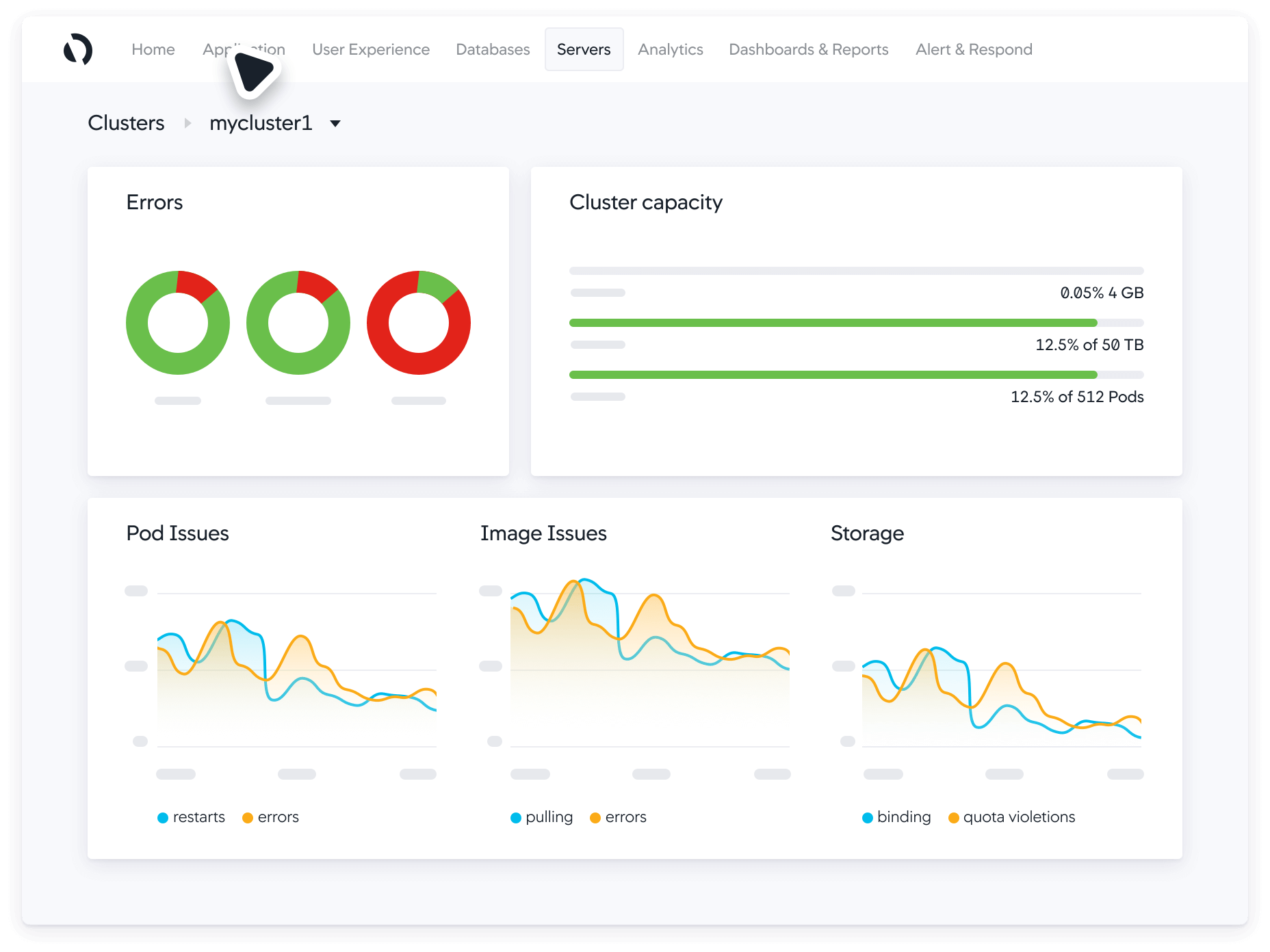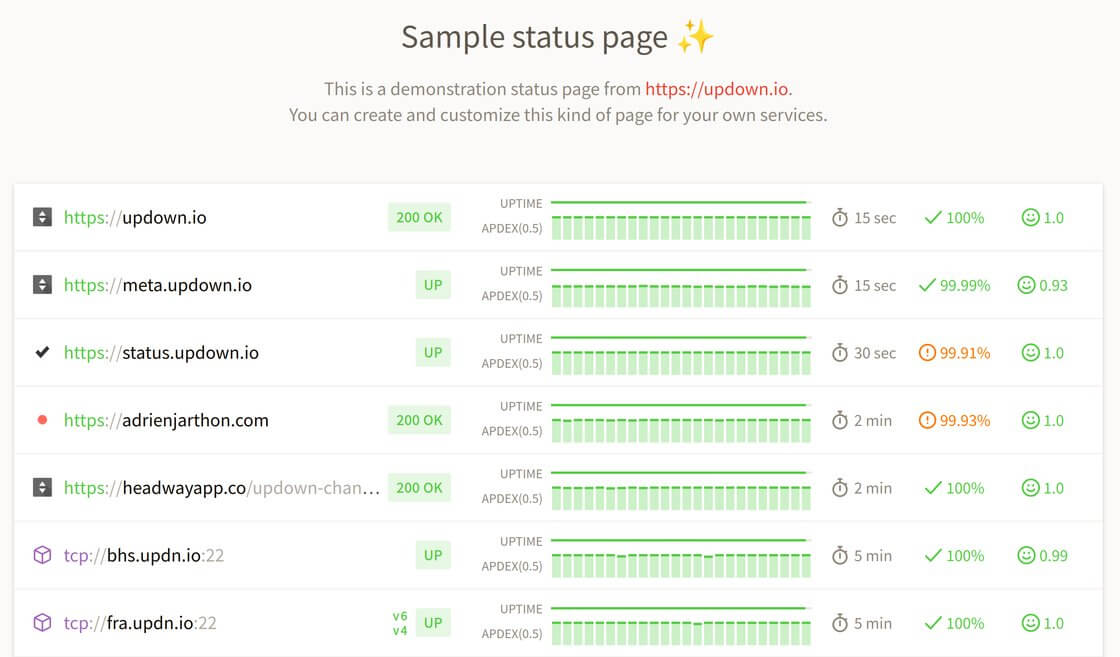
Top 10 Pingdom Alternative for Checking Your Website Health
Are you looking for the best Pingdom Alternative?
What is Pingdom?
Pingdom is a comprehensive website and server monitoring service that ensures your online assets’ availability, performance, and reliability. With its user-friendly interface and powerful features, Pingdom offers real-time insights into your website’s uptime, page speed, and transaction performance. You can monitor various aspects, including server health, network performance, and user interactions, allowing you to identify and address potential issues proactively.
Pingdom provides an easy approach with two solutions: Synthetic and Real User Monitoring. These solutions are independent, allowing users to choose and subscribe to them separately.
For Synthetic Monitoring (Uptime + Advanced), users can customize the number of monitors, while Real User Monitoring offers flexibility in selecting the desired number of pageviews. The pricing is determined based on these choices, ensuring users pay for the specific features and capacities that meet their monitoring needs.
While Pingdom may fall short in meeting certain user expectations so we’ve gathered a list of alternatives to help you explore more robust monitoring tools. This compilation aims to provide you with the insights necessary for a well-informed transition to a monitoring solution that better aligns with your requirements.
Limitations and Challenges of Pingdom
- Quotas for essential features can become costly
- Functionality, which involves extensive code and numerical aspects, may be less user-friendly for business users
- Limited focus on monitoring mobile website traffic
- New users may encounter a substantial learning curve, making the initial setup challenging
- No grouping alert features
- The WordPress plugin lacks certain features.
- Limited Integration
- The account management system is quite confusing
- Inability to capture Real User Monitoring stats for searches within
- Monitoring non-standard settings or non-web traffic can be a little difficult
Consider the following criteria when choosing alternatives to Pingdom
Features: Evaluate whether the alternative offers the necessary features, balancing functionality and usability. Ensure reliable and customizable reporting features.
Ease of Use & Value: The tool should be intuitive for both tech-savvy and non-tech-savvy users. Assess whether it provides value for money based on features and pricing.
Integrations & Third-Party Tools: Check if the alternative integrates seamlessly with other third-party services and tools in your technology stack, reducing manual work and enhancing efficiency.
Ease of Implementation: Rapid deployment is advantageous, especially for organizations aiming for quick tool adoption. Consider the implementation process and any associated complexities.
Reporting: Robust reporting capabilities are crucial for understanding network activity and diagnosing issues. Ensure the alternative provides comprehensive reporting features and dashboards.
Scalability: Select a solution that can scale with your organization’s growth. Scalability is essential for accommodating evolving network requirements.
DDoS Protection: Effective network monitoring tools should include DDoS attack detection features. Early detection is key to mitigating the impact of DDoS attacks and protecting sensitive assets.
Best Alternative for Pingdom
UptimeMonster
Reliable website and server monitoring service from the cloud to monitor your web availability, performance, and security. The tool will give you a 24/7 website monitoring service that will Monitor the availability of your website, APIs, and business-critical web transactions with powerful synthetic monitoring and testing tools.
It collects, correlates, and monitors servers alongside data from the rest of your stack. UptimeMonster server monitoring allows you to visualize, analyze, and track down different query metrics happening on your server so that you can prevent them before anything goes wrong.
Monitor your network performance like IP, DNS, Service port, Application, and others using the check monitoring tools. It will enable you to understand the network behavior and track NetFlow.
UptimeMonster check monitoring service will give you full control over your network. The check monitoring types are as follows
- TCP (Transmission Control Protocol)
- ICMP PING (Internet Control Message Protocol)
- IP Blacklist
- UDP (User Datagram Protocol)
- DNS (Domain Name Server)
- Application Monitoring
With a status page, you can share your monitoring activities and incidents with customers. You can easily make our status page public or private. You can highly customize your status page and share it with your customers to reduce the number of customer support tickets.
Using the status page you can easily gain trust from your customers. The alert notification easily notifies your customers about any incidents so that they can take necessary steps to prevent the issue. So that they will always be prepared and stay tuned.
Create and customize intricate policies for the escalation of incidents by taking into consideration various factors, including the passage of time, the availability of your team, and the source or origin of the incident.
The primary advantage, however, lies in integrated incident management and alerting. This is particularly advantageous for DevOps teams aiming to streamline their stack and potentially handle everything from a unified platform, eliminating the necessity for additional platforms.
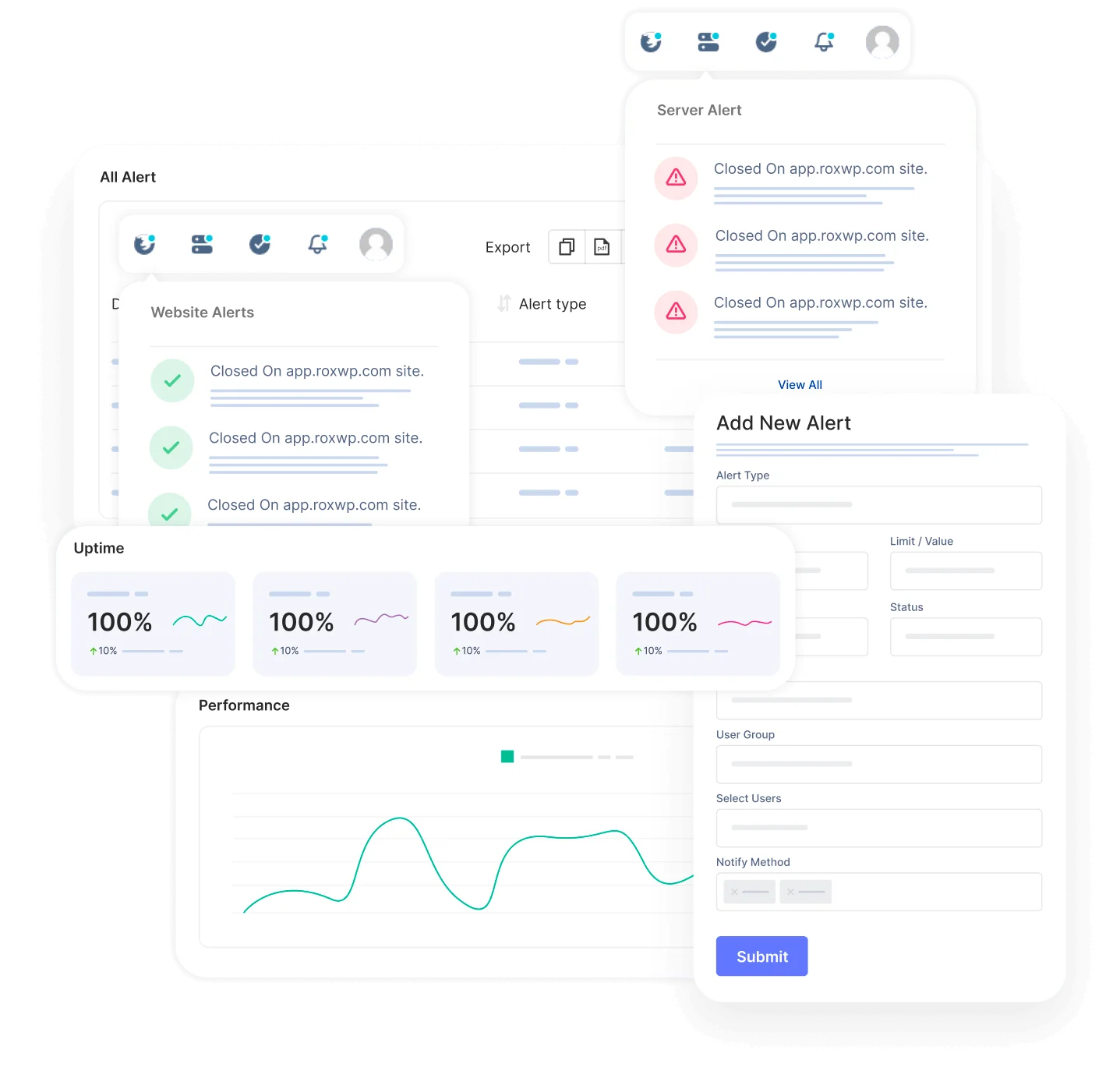
Key Features
- Reliable Website and Server Monitoring
- Network Performance Monitoring
- Check Monitoring Types
- Status Page Customization
- Alert Notifications
- Incident Escalation Policies
- Incident Timeline
- SSL Expiration Monitoring
- Search String Monitoring
- Monitoring for HTTP(s), Ping, Port, DNS, SSL & TLD expiration, Cron jobs
- Unlimited email and push notification alerts
- Capture screenshots & error logs for incidents
Pros
- Reliable Uptime Monitoring
- Easy Setup and Configuration:
- Cost-Efficiency
- Customer Support:
- Accurate Reporting:
- User-Friendly Interface
- Customizable Alerts
- Status Page
- Escalation policies
- Incident Timeline Report
Cons
According to user reviews, UptimeMonster doesn’t exhibit any notable drawbacks. However, a few users have highlighted certain feature limitations present in the free plan offering. These limitations might include restricted access to certain functionalities or reduced capabilities compared to the premium plans. Despite this, the overall consensus from users is overwhelmingly positive regarding the platform’s performance and functionality.
Our perspective on this matter revolves around the notion that smaller teams might not necessitate the utilization of numerous advanced features. Therefore, it appears reasonable to curtail access to certain functionalities, considering that smaller teams might not require or fully utilize these advanced features. This approach ensures a streamlined and more focused user experience, optimizing the platform’s usability for smaller teams with specific needs.
Pricing
- Standard plan at $7/month with 30 monitors and 2-minute interval
- Professional plan at $19/month with 50 monitors and 1-minute interval
- Business plan at $99/month with 100 monitors and 25-second interval
Uptrends
Uptrends is a comprehensive website and server monitoring service designed to ensure your online assets’ continuous availability, performance, and security. With powerful synthetic monitoring and testing tools, Uptrends enables 24/7 monitoring of your websites, APIs, and critical web transactions. The platform goes beyond basic uptime checks, allowing you to collect, correlate, and monitor data from your servers, offering insights into various query metrics to prevent issues before they impact your operations.
Uptrends covers a spectrum of network performance aspects, including IP, DNS, service port, and application monitoring through its check monitoring tools. These tools provide detailed insights into network behavior, allowing users to track NetFlow and gain a thorough understanding of their network’s performance.
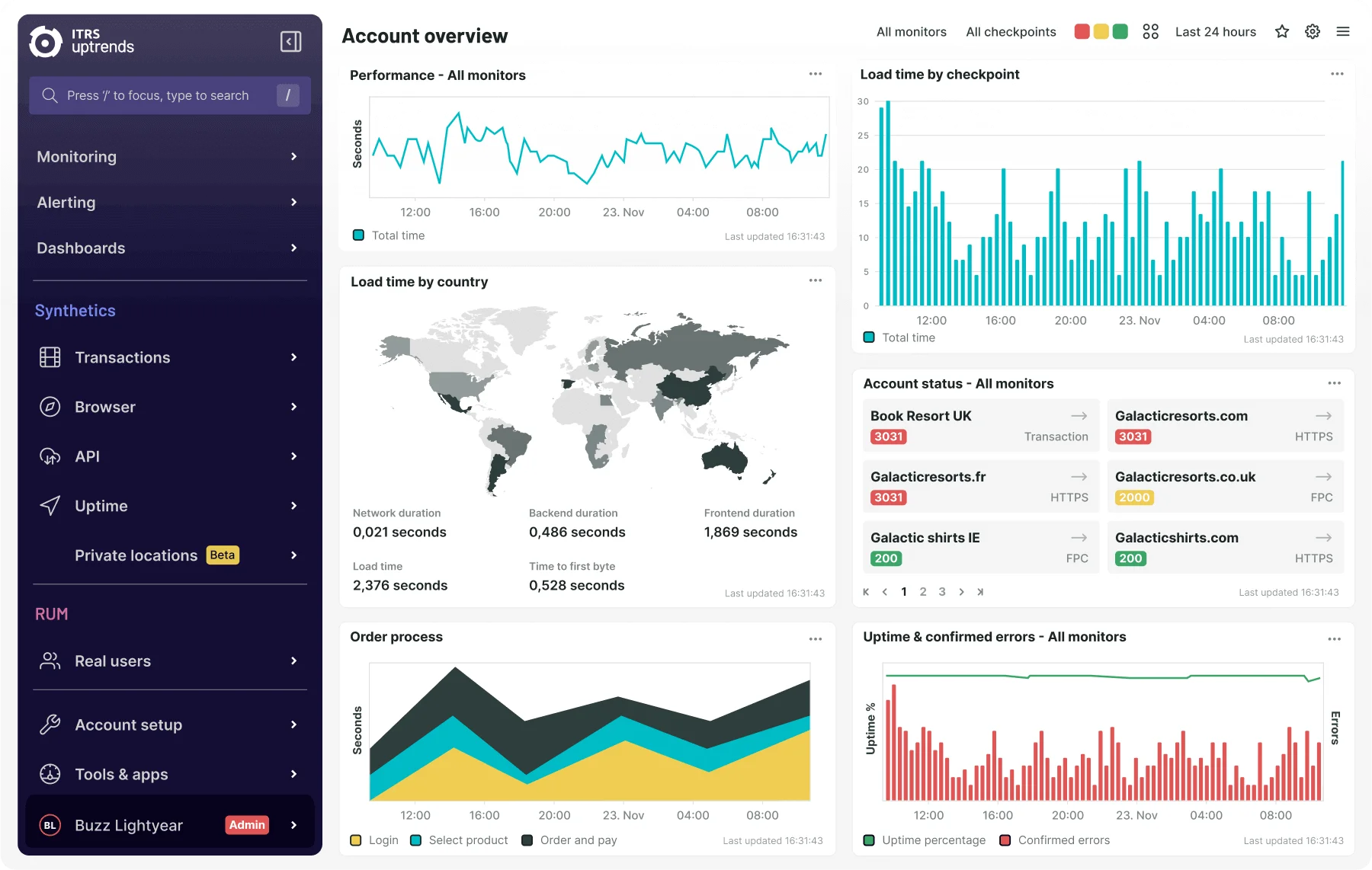
Key Features
- Integration
- Alerting
- Monitoring checkpoint
- Private recorder
- Transaction recorder
- Mobile app
- Public status page
- Custom metrics
- Concurrent monitoring
Pros
- Detailed alerts in case a check fails with error codes
- Available checkpoint
- Supports
- Easy to control multi-user access
- Ease of use
Cons
- The dashboards provide many options, so it can sometimes be confusing to know where to find exactly what you’re looking for.
- It also takes quite some time to set up things properly to avoid alert fatigue.
- Identifying the root cause of an uptrend poses a significant challenge due to its fluctuating nature involving both highs and lows, potentially impacting a business in either a positive or negative manner.
- Expensive
- The timeframes to monitor are not easily defined and implemented.
- Email alert notification charge
Pricing
Business plan starting at $100/month for organizations with fewer than 5 websites, applications, or APIs.
Splunk
It is a powerful and versatile data analytics platform designed to turn machine-generated data into valuable insights. Splunk can ingest and index data from a wide variety of sources, including logs, events, and metrics, providing a centralized platform for managing diverse datasets.
It has search functionality that allows users to explore, analyze, and correlate data in real-time. The platform supports complex queries and provides interactive dashboards for visualizing results. It also integrates machine learning and artificial intelligence capabilities, enabling advanced analytics and predictive insights. This helps in identifying trends, patterns, and potential future issues.
It integrates seamlessly with a wide range of third-party applications, services, and technologies. This allows users to pull in data from various sources and create a unified view for comprehensive analysis. It also has a vibrant user community and an extensive ecosystem of apps and add-ons. This community-driven approach contributes to the platform’s richness and adaptability to diverse use cases.

Key Features
- Synthetic Monitoring
- Log Aggregation
- Application Monitoring
- Infrastructure Monitoring
- Automated Anomaly Detection
Pros
- Data Selection and Processing
- Ingestion Techniques
- Role-based access to specific logs
- Log event searching
- Exporting is easy
- Extensive data integration capabilities, accommodating diverse formats
- Performing effectively with unstructured data from a variety of sources.
Cons
- Expensive as compared to its competitors
- Don’t have the capability to edit the config files directly
- Deploying apps requires a support ticket and can have a long turnaround time
- Outdated user interface design
- Limited capabilities in data modeling and machine learning
Pricing
Splunk offers adaptable pricing plans designed to cater to the unique requirements of businesses. Costs start at $15 per host/month, with variations depending on the license type and data usage. For example, a 500 MB license is available starting at $5,000.
AppDynamics
AppDynamics empowers organizations to gain deep insights into the performance of their applications and IT infrastructure. With a focus on delivering exceptional user experiences, AppDynamics provides end-to-end visibility across applications, underlying infrastructure, and user interactions.
AppDynamics offers real-time monitoring of applications, providing visibility into various performance metrics such as response times, error rates, and resource consumption. This enables proactive issue identification and resolution.
Transaction Tracing: The platform provides detailed transaction tracing, allowing organizations to trace user interactions across the entire application stack. This feature aids in identifying bottlenecks and optimizing application performance.
Key Features
- Real-Time Monitoring
- Transaction Tracing
- Code-Level Visibility
- Infrastructure Monitoring
- End-User Monitoring
- Business Transaction Monitoring
- AI-Powered Analytics
Pros
- Provides real-time dashboards and in-depth insights into each layer of the application stack
- Insightful dashboard report
- Flexible and scalable
- Resource Optimization
Cons
- The application flow map is not user-friendly
- Setting up AppDynamics for the first time may pose a challenge for certain users. Enhancements in user experience could be achieved by simplifying the onboarding process or introducing more user-friendly setup wizards, particularly for those new to the platform.
- Not enough documentation
- Recurring costs are very high
- Instrumentations are a heavy lift at times.
- Integrating with various event sources seems challenging.
Pricing
AppDynamics provides diverse pricing plans, beginning at $6/month for fundamental Infrastructure Monitoring. However, for Synthetic Monitoring, the starting point is $60/month, with the Enterprise Edition costing up to $90/month per user.
Updown.io
Updown.io offers essential uptime monitoring features, including HTTP and SSL checks, ensuring prompt detection of downtime confirmed from various locations before triggering alerts. Unlike some competitors, Updown.io does not provide a free plan, and opting for the paid plan is necessary, even for monitoring a single website.
However, the advantage of the paid plan lies in its flexibility, allowing users to pay based on the requests made to their websites. This cost-effective approach enables users to tailor their monitoring frequency to their specific needs, potentially saving money for hobby projects with less frequent checks. Nevertheless, for users managing multiple websites requiring more frequent monitoring, the expenses with Updown.io may surpass those of alternative solutions on the market.
Key Features
- Dual stack
- Fast check
- Various Integrations
- Status page
- Rest API support
- SSL check
- Text search
Pros
- Nice and clean UI
- Super easy setup
- Great support
Cons
- Limited features compared to some competitors
- No root cause analysis
- Limited historical data on the free plan
- No mobile app
StatusCake
StatusCake is a comprehensive website monitoring service designed to ensure the continuous availability and optimal performance of websites and online services. With a diverse range of monitoring features, StatusCake empowers users to proactively identify issues, minimize downtime, and enhance the overall user experience.
It provides a range of functionalities, encompassing real-time alerting, reporting capabilities, and uptime monitoring featuring 30-second test intervals—all packaged in a user-friendly interface.
Key Features
- Uptime Monitoring
- Page speed monitoring
- Domain monitoring
- Server monitoring
- SSL monitoring
Pros
- User-friendly interface
- Free plan with solid monitoring features
- Great integrations
Cons
- Test intervals are limited on the free plan
- May not be as comprehensive as other tools on this list
- Customer support can be unresponsive
Pricing
- Superior plan at $20.41/ month with 2 team members and 100 monitors
- Business plan at $66.66/ month with 10 team members and 300 monitors
Checkly
With a focus on providing comprehensive observability, Checkly enables users to proactively monitor critical aspects of their web services, helping to identify and address issues before they impact end-users.
Checkly provides users with a streamlined and intuitive dashboard to effectively monitor the status and performance of their API endpoints and critical website transactions. The platform allows users to easily collaborate by adding teammates, seamlessly integrates with CI/CD pipelines to initiate checks, enables the publication of a customized status page under a user’s domain, and facilitates SSL expiry checks to ensure robust security measures with Checkly’s comprehensive feature set.
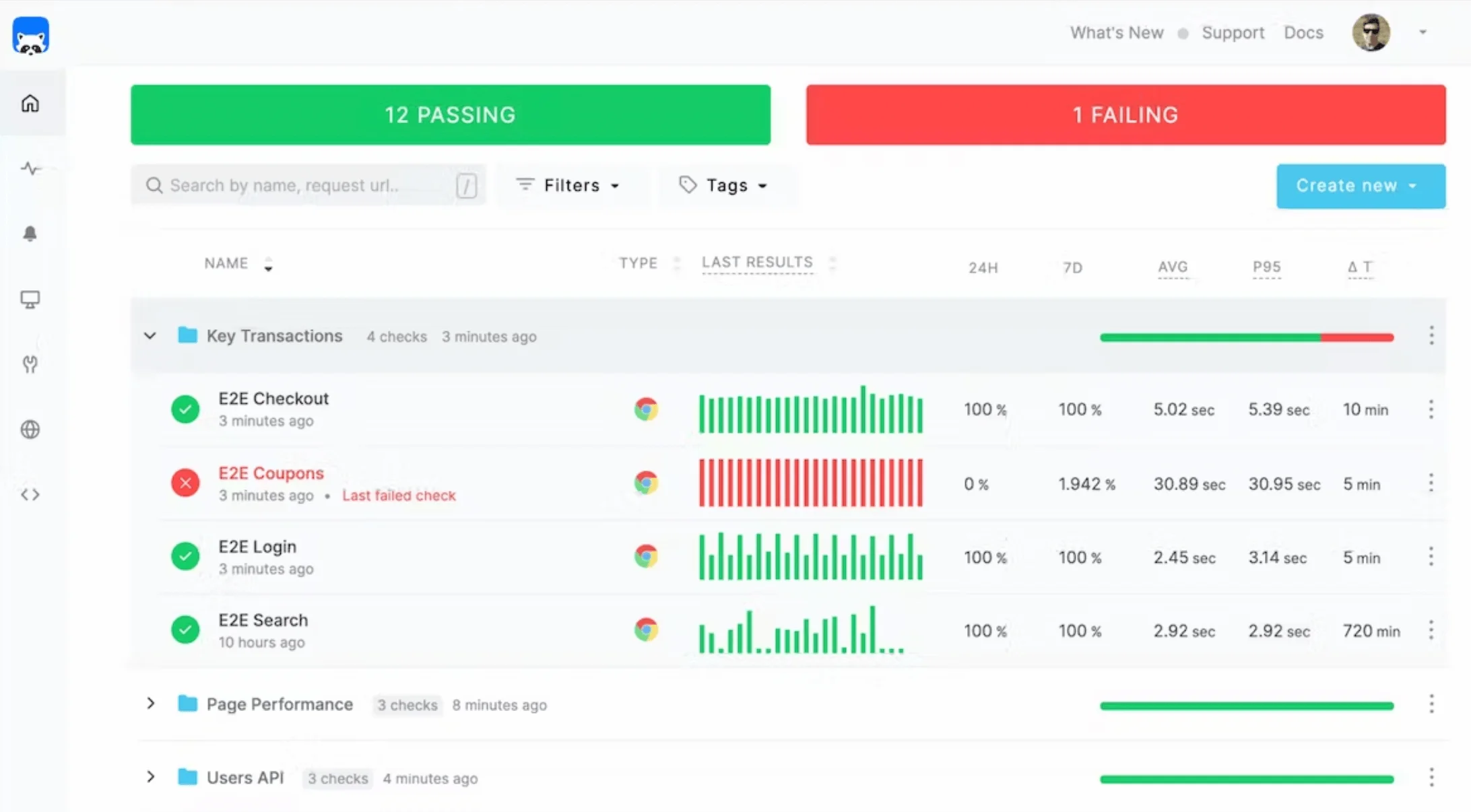
Key Features
- Easy Monitoring at Scale
- Faster Problem Detection
- Shorter Downtime
- Code-first workflow
- TypeScript first
- Monitor APIs
Pros
- Dependable code monitoring solution
- Swift and straightforward setup process
- Robust and adaptable uptime and performance monitoring for both APIs and web applications
Cons
- Insufficient documentation for reusing code snippets in API checks
- Limited availability of pricing plans
- Complex user interface
Pricing
- The team package starts at $40/ per month
- Enterprise package for custom-built for large-scale teams to build, run, and scale synthetic monitoring with extensive flexibility.
Webgazer
Webgazer is an all-encompassing tool that combines uptime monitoring, cron job monitoring, and visually appealing hosted status pages in a single solution for your business. It provides everything necessary to ensure the seamless operation of your business without interruptions.
Webgazer delivers functionality with a slightly elevated price point. All paid plans encompass both uptime and SSL monitoring, with check intervals set at 5 minutes for the free plan and 1 minute for all paid plans. Webgazer offers alert notifications via SMS, phone calls, email, and Slack.
However, it’s important to note that these alerts are not unlimited, even for the paid plans. SMS and phone call alerts operate on pre-purchased credits, ranging from 16 on the Hobby plan to 150 on the Business plan. This limitation may impact usability, particularly for users monitoring multiple sites.
It assesses the service’s status by dispatching an HTTP request at a customizable frequency, promptly notifying you of any identified issues. To prevent alert overload, WebGazer conducts supplementary checks when an incident arises, issuing notifications only when these additional verifications confirm the incident.
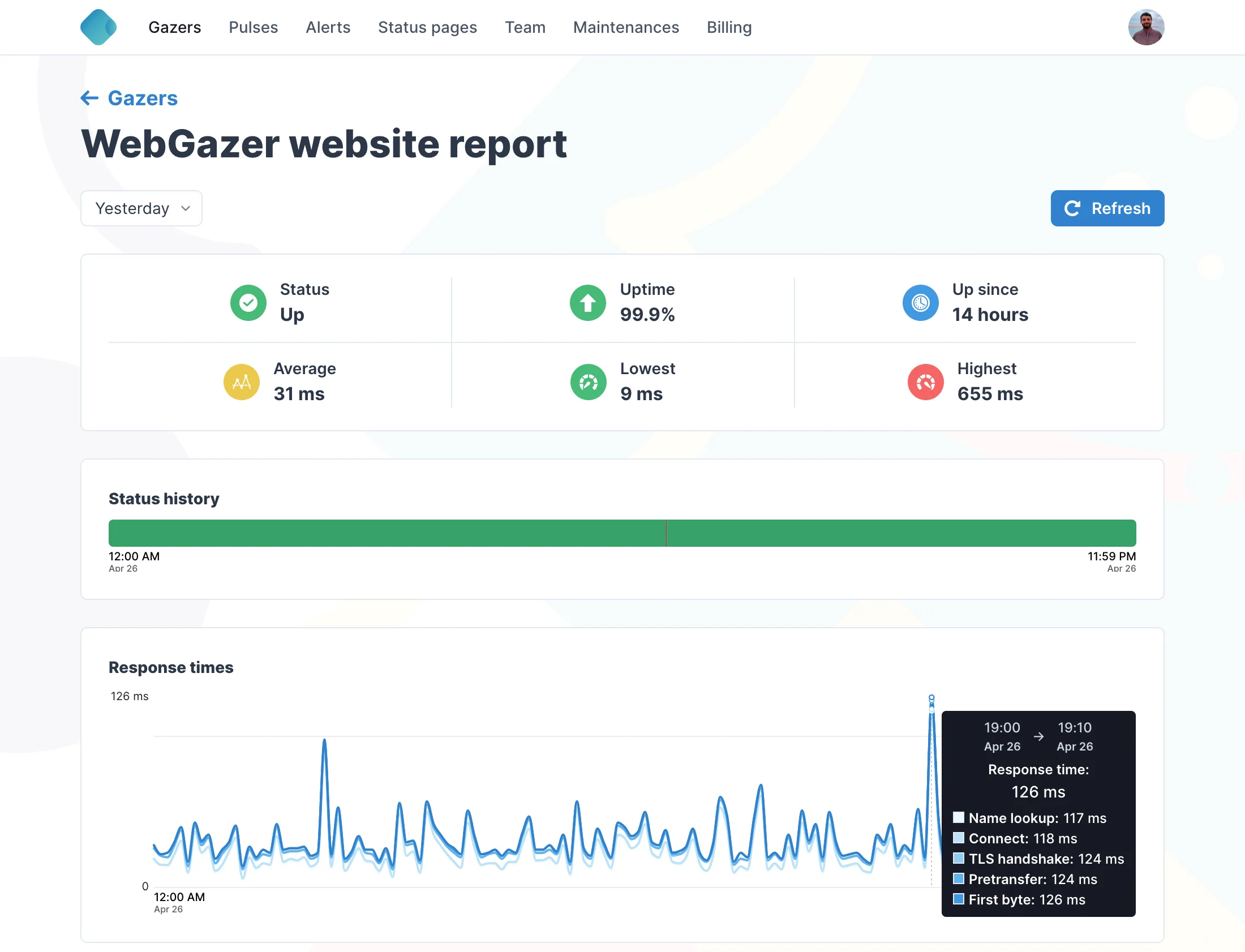
Key features
- Instant downtime notifications
- SSL monitoring
- 1-minute check intervals
- Configurable HTTP requests
- Performance monitoring
Pros
- SSL Security Monitoring
- Flexible Check Intervals
- Multichannel Alert
- User-Friendly Interface
- Customizable Notifications
- SMS and Phone Call Alerts
- Cron Job Monitoring
Cons
- Higher Price Tag
- Limited Alerts on Paid Plans
- Credit-based SMS and Phone Call Alerts
- Limited Documentation for Code Reuse
- Limited Pricing Plans
- Complex User Interface
Pricing
- The Basic package at $19 with 15 monitor
- The Pro package at $69 with 75 monitor
- The Business package at $179 with 250 monitor
Uptime.com
Uptime.com is so expensive. Besides it doesn’t offer any free package. It also provides unmatched visibility and availability, empowering engineering, operations, and SRE teams to monitor & respond to their most essential services.
The Starter plan starts at $20 per month which includes 20 basic checks, no status page, and groups that are not included in this package. While Uptime.com’s pricing structure may position it as a relatively expensive alternative. It’s essential to recognize the company’s established reputation and consider whether the pricing aligns with the perceived reliability of its systems.
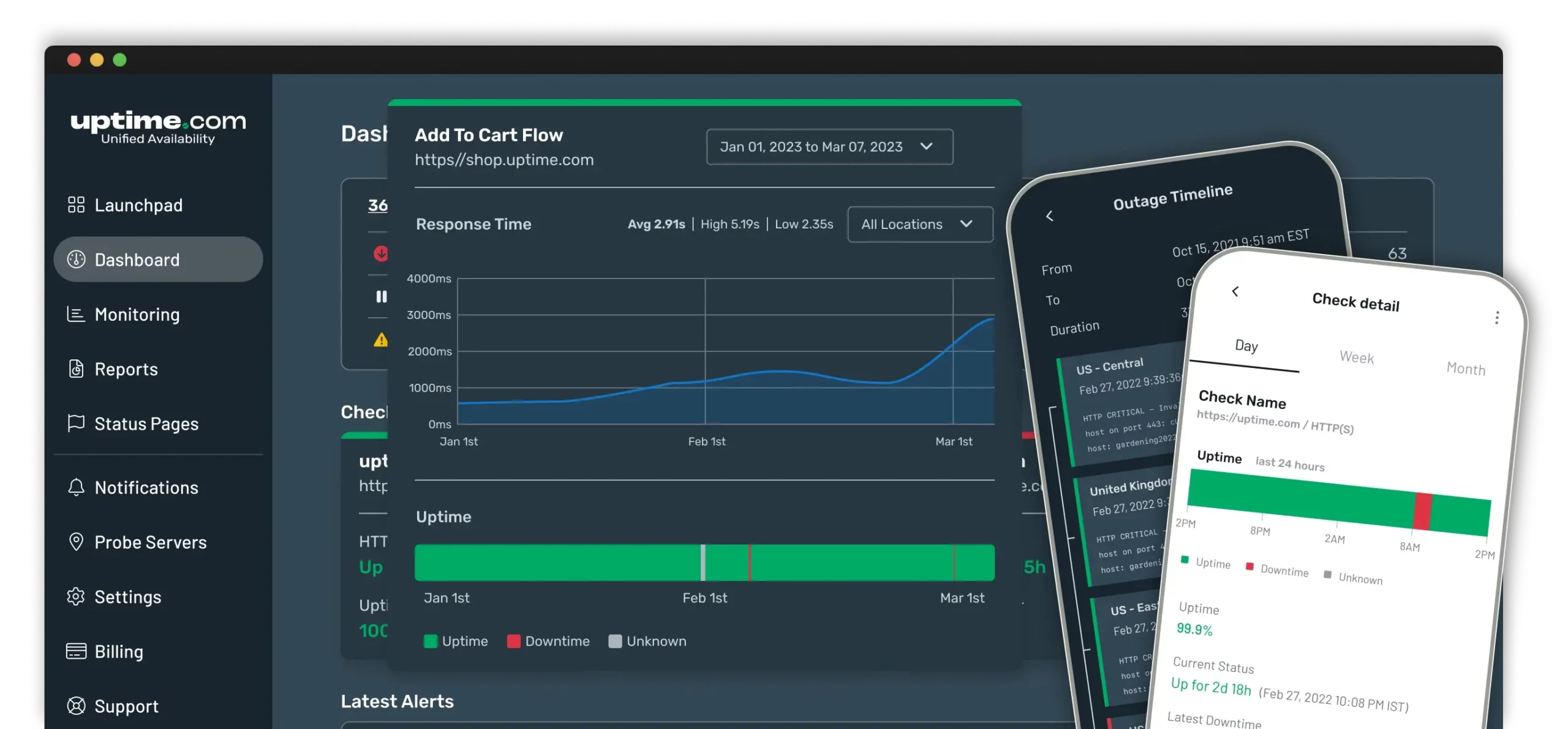 Pros
Pros
- Notifies quickly of any detected issues
- Robust API
- Multiple monitoring locations
- Easy configuration
- Insight reporting
Cons
- More expensive than other tools
- The timeout limit of 60sec on the transactions was a bit difficult to manage for some users
- Fales notification issue if the monitor is not configured properly
- Public status pages could be more configurable
Pricing
- Starter package – $20/month with 20 checks
- Essential package – $67/month with 40 checks
- Premium package – $379/ month with 200 checks
HetrixTools
HetrixTools is an easy-to-use uptime monitoring and blacklist check tool. With Hetrix tools you can select to monitor your website or server from up to 12 different locations around the world. Each one of your Uptime Monitors will have a neatly organized Uptime Report, which will contain all of its history, such as recorded outages, errors, response time, etc. Every Uptime Report is private by default, which means that only you (as a logged-in user) can view it, but you can also choose to make it public and share it with your colleagues or clients.
Every Uptime Monitor comes with detailed reporting, encompassing its entire history, including recorded outages, errors, response times, and more. By default, each Uptime Report is private, ensuring that only you, as a logged-in user, have access. However, you also have the option to make it public, allowing you to share it with colleagues or clients as needed.
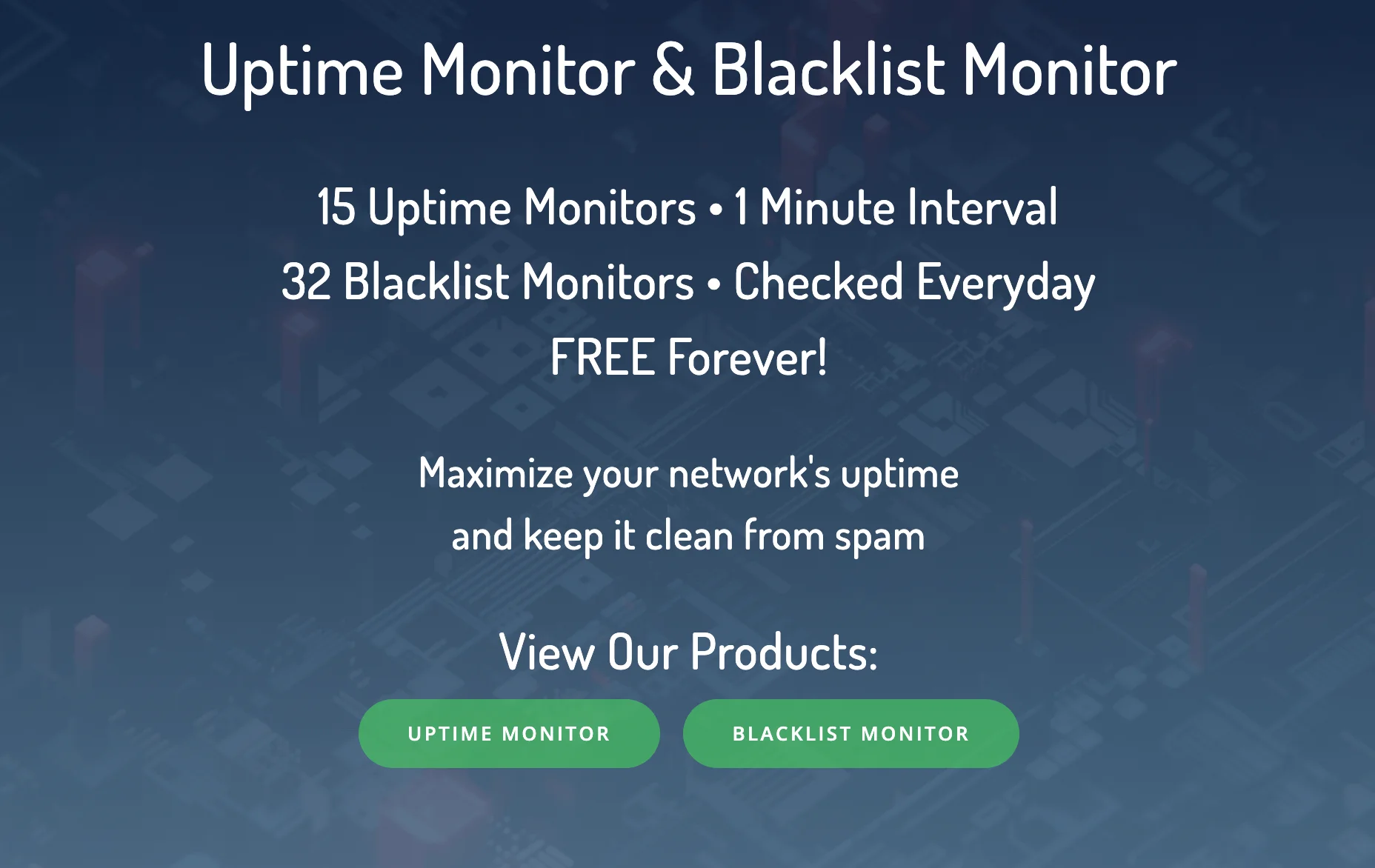
Pros
- Blacklist monitoring
- Customizable alerts and notification
- User-friendly interface
- Reporting
- Pricing
- Geographical monitoring
Cons
- Network problem
- Security issue
- Adaptability
- Customization and flexibility
Pricing
- Professional – $9.95/month
- Business – $19.95/month
- Enterprise – $49.95/month
Wrapping Up
Choosing the best Pingdom alternatives requires a thorough assessment of your unique requirements and how well they match the features provided by different monitoring solutions.
After conducting thorough research and rigorous testing, UptimeMonster has proven itself as the premier substitute for Pingdom. It encompasses all the vital features essential for smooth project management, presenting a cost-effective solution that is especially advantageous for startups and small teams.
